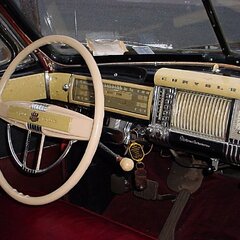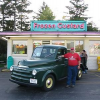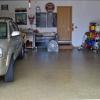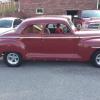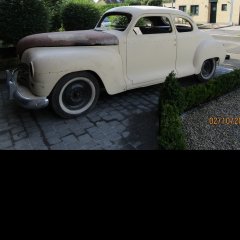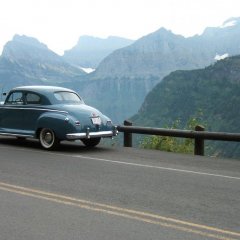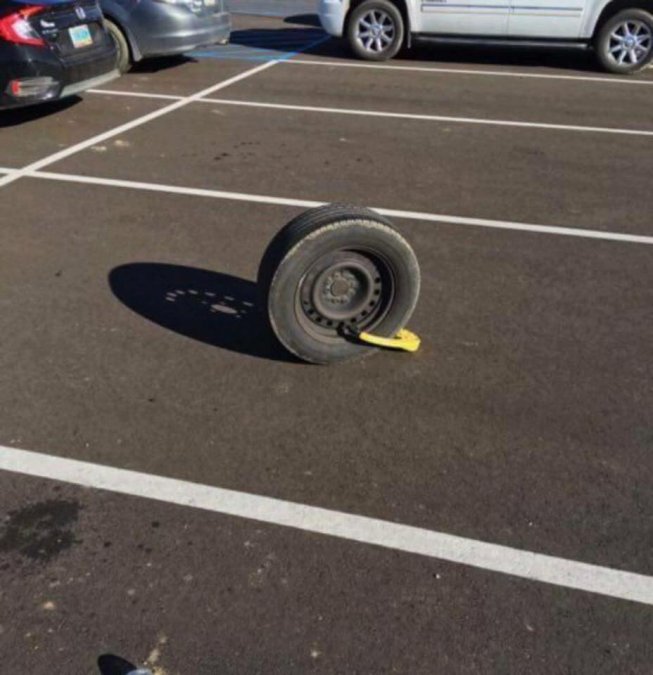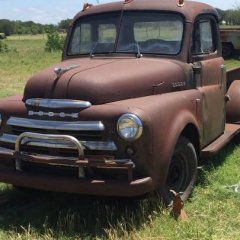Leaderboard
Popular Content
Showing content with the highest reputation on 01/07/2017 in all areas
-
Two carb setup is for increased performance at wide open throttle, at the expense of throttle response and performance at partially open throttle. Wider carburettor bore = lower air speed = worse fuel pulverization = worse response and worse performance at lower engine speeds. However, as engine speed increases, air speed increases, and performance improves. Narrower carburettor bore = higher air speed at low rpm = better pulverizatiobn = better response and better performance at low er engine speeds. However, as engine speed increases, narrow bore chokes the engine, and performance degrades. An optimal carburettor design is a compromise between these two opposing tendencies. Two-barrel carburettors offer optimal performance at both low and high engine speed. The second barrel remains closed at lower speeds, so that engine sees a carb with narrow bore. At high speeds, second barrell opens, making an equivalent of wider carburettor bore. (Flame suit on)3 points
-
Vintage gas caps - be sure any replacement cap is vented, otherwise the engine will eventually stop, and opening the cap will produce a sucking sound. So let that be a lesson to you. Modern gas caps - sealed system, with some sort of carbon vapor trap at the engine to let air in and capture any vapor trying to escape. With this type of gas cap, be sure to close it firmly, at least three clicks, or else your engine light will come on and the car will not start remotely. I heard that on the internet some time ago, and verified it for myself just now. A few days ago I filled the gas tank, and must have given the cap just a lick and a promise. Th engine light came on, and the car would not start remotely these last few days (and it's cold! out). After my new Harbor Freight code reader refused to work, I set up an appointment for next week to have the code read by an expert, and the problem fixed. But, acting on a hunch, I tightened the cap this morning before running some errands. No engine light! Car starts remotely. "Honey, I startled the car!" So let that be a lesson to you.2 points
-
1 point
-
Interesting, and I wish you luck and look forward to your documented data. There is no way on gods green earth that any single carb, whether it be a 1bbl/2bbl/4bbl, on this engine and 3 siamesed intake ports will have better fuel distribution, fuel atomization or fuel economy and performance than a multi carb intake, actually 3 matched carbs, each delivering fuel to each siamese port,no single carb design will be better than this set-up. Hey but if the 1 carb from a Nissan works for you great, not putting your intent down, just it will not compete with a properly matched and tune ,multi carb set-up on these engines. Keep us posted.1 point
-
I know I am jumping the gun and will have to remove and reinstall but, I have very little will power..... I installed the headliner and Julies seat belt last month. Christmas came again for me today. thank you Santa for the SS housing! thank you John at "Pilothouse interiors"..... love the interior and visors!!!!!! now, if the temps will get to the 40's maybe I can stand to be in the shop and get some more exterior work done1 point
-
That is exactly what it does. The starter solenoid makes its ground through the generator armature. When the generator is charging, the voltage is equal to that provided through the starter switch so the solenoid cannot activate the starter. On 49 and up, this wire is attached at the voltage regulator When generator brushes wear out, it can make it impossible to activate the starter. I wonder how many perfectly good starters got replaced when it was the generator's fault.1 point
-
Why would you need your flame suit on ? It appears to be pretty much directly plagiarised section from a well know carb manufacturer. From a pure engineering and scientific standpoint their statement is correct. In fact in pure carb functioning making 6 barrels would be better, and on and on until you get to the point that you get to the fact that a carb is obsolete technology. That being said your piece, well it wasn't written for an engine with 3 Siamese intake ports feeding a 6 cylinder engine where its clear that the separation of fuel distribution trumps a single multiple barrel device!1 point
-
1 point
-
i think its a safety feature to prevent the operation of the starter with the engine running.It disconnects the solenoid when there is sufficient voltage to equalise the pressure from the push button.1 point
-
I got to chime in on this problem, new guy here. have been making a living working cars since '76 . My opinion is, none of the exhaust valves are seating, all valves are the wrong color, exhaust valve should be tan,intakes should be dark gray.. looks to be a guide problem. some of the valve are sunk. this raises hell on seat pressure. how many strokes to get compression reading you got , do you remember the first stroke psi ? I guess 40 psi, if it wasn't 60 to 70 psi you have a valve and/or ring problem .. the fuel mixture is waaay too rich. the black color in chamber. this is a float level problem and/or needle and seat. notice fuel wash marks on piston edges. A problem in combustion chamber , could cause gasket fail, it doesn't look to be a warp head or block. the head gasket looks to be thick enough everywhere. well as much as I can tell from pictures. this motor was pinging, weather? or not you could hear it or not . the motor might of been rebuilt at some point, but it sat somewhere for along time without moving. the rust marks on cylinder wall.. also the fuel we have today doesn't have a lot of ash, so if you have a carbon build up then , there is oil in combustion chamber. From past experience if you don't fix the problem, it won't go away. doctors fix the symptoms ,mechanics fix the problem..hope you get it straighten out. feel free to pick my theory apart. the INTERNET is a harsh place.1 point
-
Custom aluminum head makes most sense to me of all hot rod parts. It makes sense even if I am not interested in racing, as it allows substantial increase in both power and ecomomy, with no downside. Good for everyday driving. Edgy heads are now $950. One might think expensive, but compared to what? To mass-produced heads of modern engines? Even these may cost $300-600 depending on the engine. Custom head is all hand-made. Earl pays $400 to the foundry, and then there is a lot of precision machining work after that. I think the price is reasonable.1 point
-
1 point
-
1 point
-
A couple of weeks ago my HP laser jet 6500 all in one quit feeding paper. A guy on the internet said the problem was a broken feed gear that was slipping on the drive gear. He said to get a mirror an place it in the paper supply and look up. Slide the gear to the left, apply some JB weld on the drive gear, then slide the broken gear back over and let it sit for 24 hours. Bingo, it works again, instead of hitting the trash. Yeah Internet!1 point
-
Welcome WeggieBob, it's always good to see a new member, especially one with a fine looking P15. I hope you have as much fun with yours as I'm having with mine, enjoy.1 point
-
Hi Bob, great looking car !! mine is far away from yours ! need some time. Dan from the Netherlands1 point
-
1 point
-
despite the damage shown, it appears to be on parade under its own power...which leads to part two of this observation....were all the death, injured and total account of accidents this same car....? Inquiring minds NEED to know...1 point
-
What car is this? Something diff about it. Looks more robust than a stock car to me. I'd guess 42 Dodge but I thought the rear glass would be flat in what appears to be a Biz Coupe. Great looking car, none the less.1 point
-
1 point
-
1 point
-
Quoted from the interweb: opinions vary . Of course just because it is on the web does not make it true. Nor does it make it false. ""I guess you just can't assume that people stop and think about these things... The mist thing... Well, misting it is just fine (but too da.....easy), but back in the day we just filled a cup of water, revved the engine and dribbled the water into the carb. Why it works... Along the way from the cup to the combustion chamber, the water is joined by its buddies, fuel and air. Upon reaching the combustion chamber, the fuel and air perform an erogenous feat called combustion. This excites the water to the point of instantaneous vaporization. When this happens (as I assumed all knew) the volume of the water expands. Since it's instantaneous it shatters the carbon deposits and all the participants then try their damnedest to pop out your exhaust. Does it hurt? Undoubtedly for the carbon, your motor loves it, just don't dump a whole cup in at once."" And: "Yes, I have done this in the past. A few times. It does work, as illustrated by the knowlegable posts preceeding this one. A mist of water injected into the air stream and sucked into the combustion chamber will, upon ignition of the air/fuel mixture, explosively turn into steam. This does indeed have the effect of quite literally steam cleaning the carbon deposits from the piston face as well as the faces of the valves. The heat of the combustion chamber will completely eliminate any danger of rust from the components exposed to the vapors. The best technique is to manually open the butterflies while spraying the water into the carb opening (works with TPI systems also). If the volume of water is a little bit excessive it will cause the engine rpms to drop, but by controlling the butterflies with your fingers you can prevent the engine from dying. Just back off on the water spray for a few seconds and let the idle speed return. Keep the idle speed up to around 1000 or so."1 point

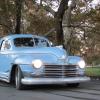
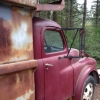

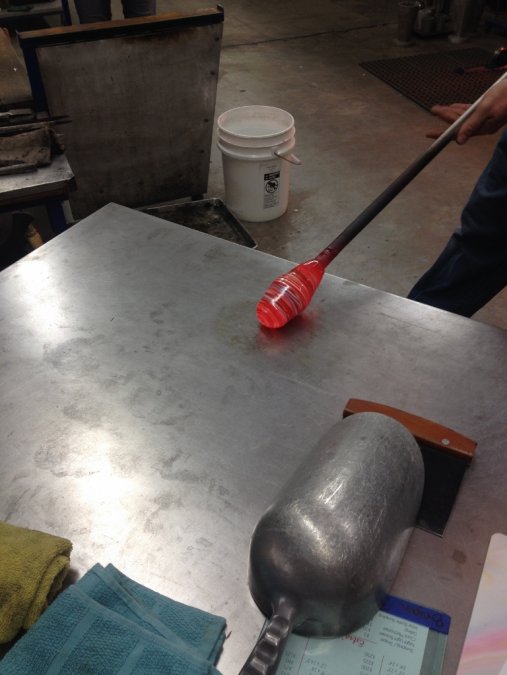
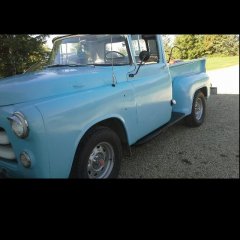
(768x1024).jpg.a5dc5a97e97b7833938c5f57b7c60f5b.jpg)
(768x1024).jpg.917887ff334120acf80124896d4b1c9a.jpg)





